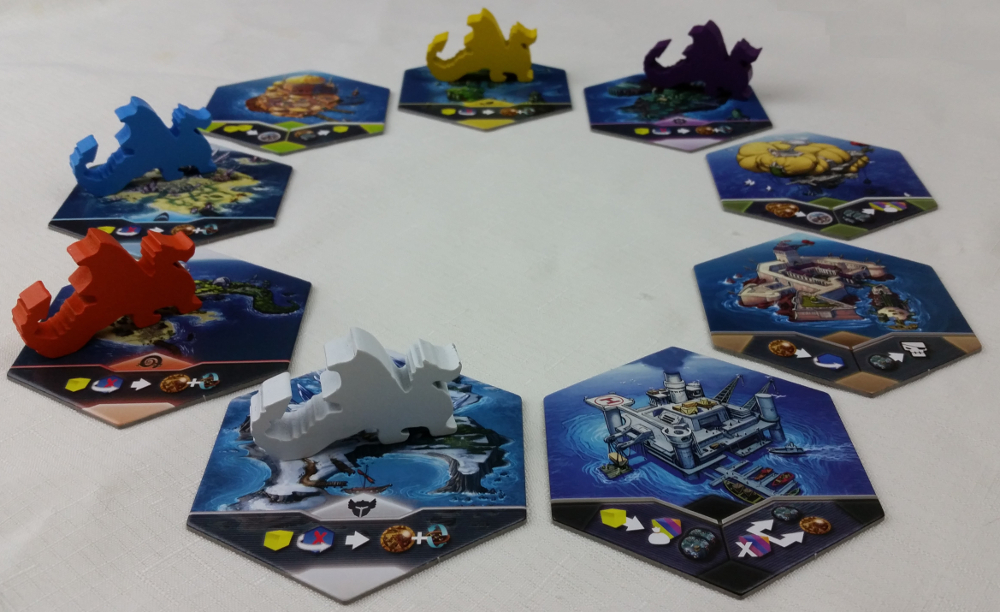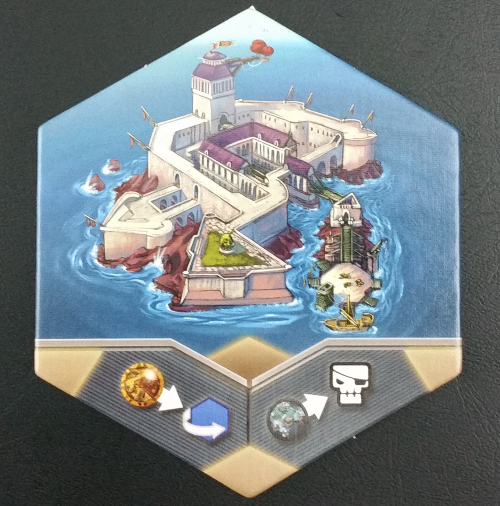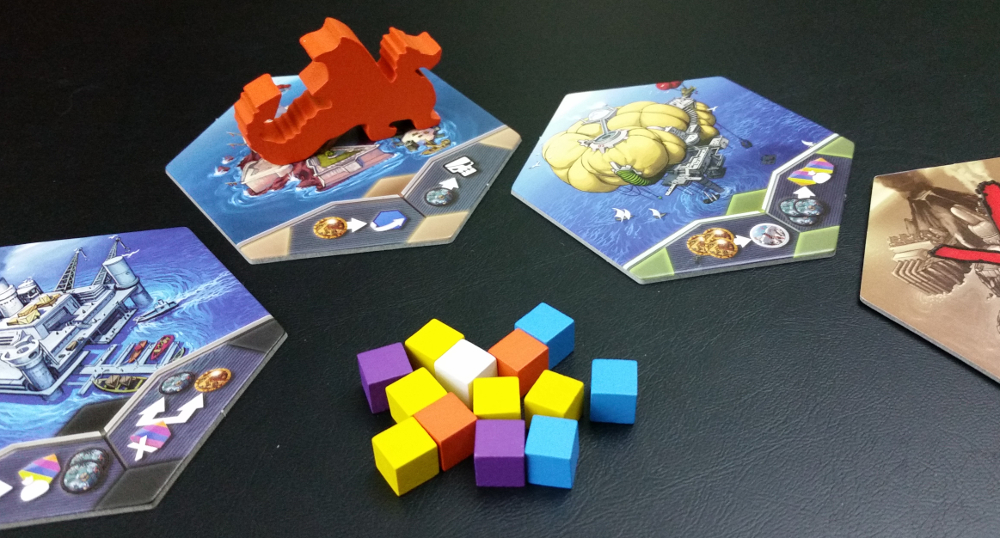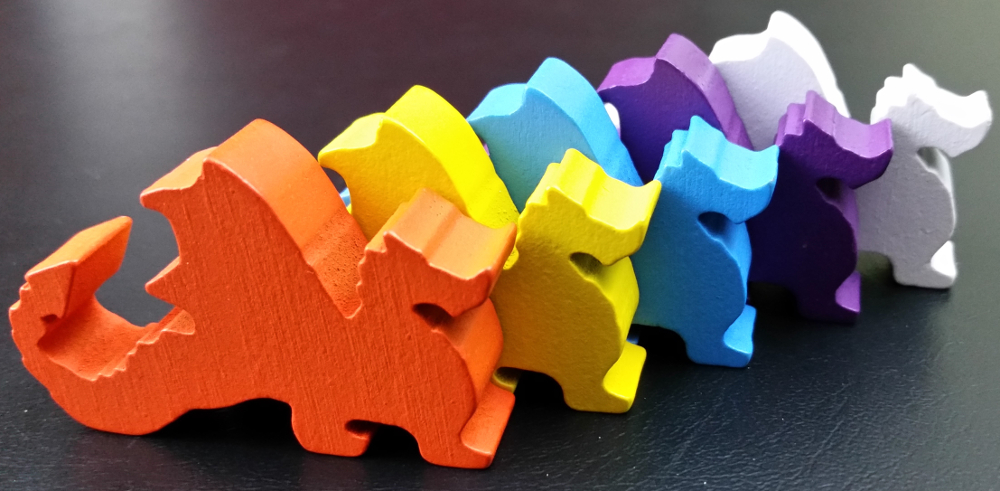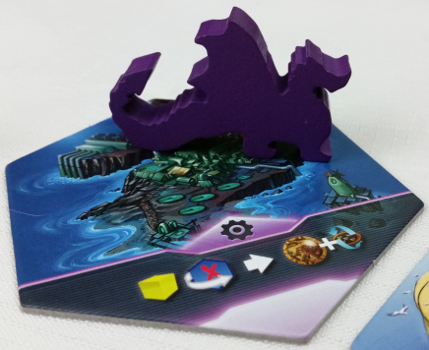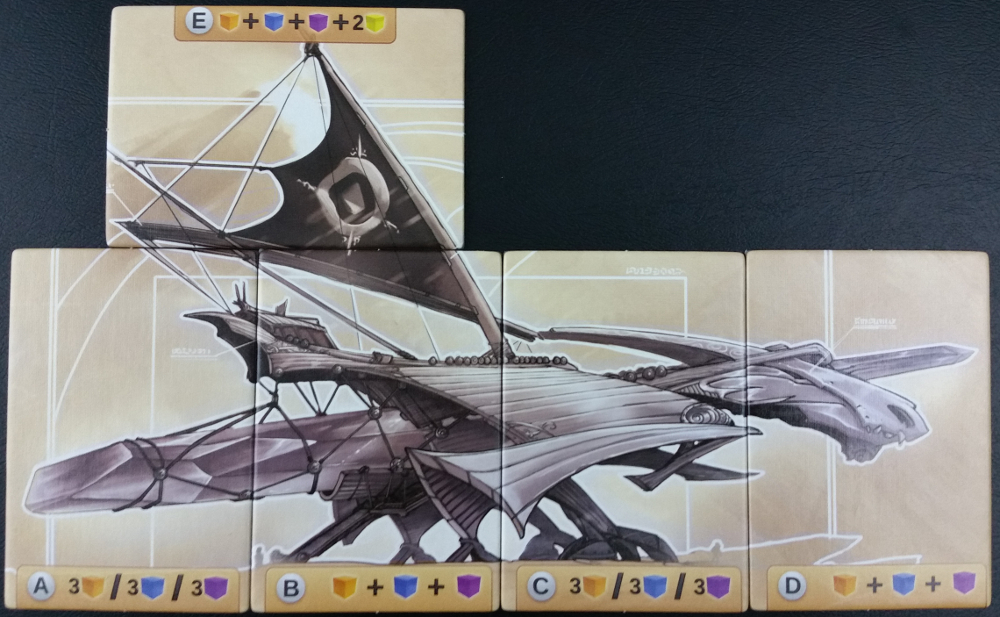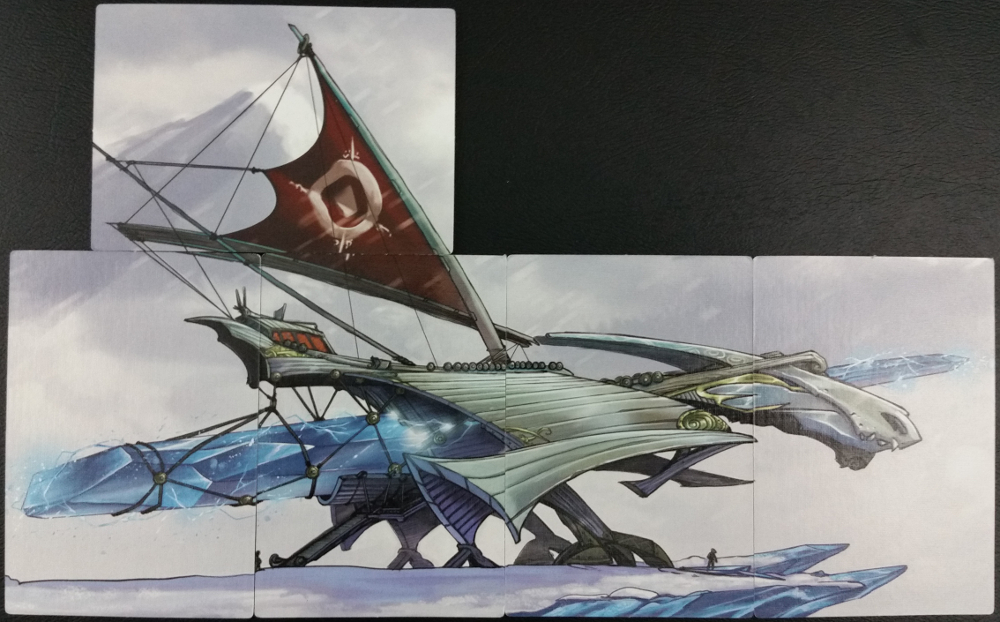I never believed this day would come. Sharkdad told us stories when we were broodlings about a time when the world was bigger and its peoples far more diverse. He spoke of our once-great shoreline kingdom, filled with more sandbars and feeding grounds than our school could ever hope for, and the wonder of the majestic Dragons who risked all to save us – especially the Elder White, on whose tall dorsal fin our people rode to safety. If this day is truly upon us, if RYŪ is truly returning, we must honor the sky serpents. We must show them that we of the Shark Clans have never stopped swimming, despite all odds, and that their efforts were not wasted on the weak.
-Lantom Sharptooth
The Premise
Centuries ago the world flooded, and a race of dragons helped relocate as many survivors as possible to new lands before disappearing. Those lands became a chain of islands, each controlled by a different race or guild. Now, word has spread that the oldest dragon, RYŪ, is set to return. As leaders of these clans, players rush to build a statue in RYŪ’s image for the honor of welcoming the dragon back.
The Rules
Despite its esoteric premise, RYŪ is a light cube drafting game for 2-5 players that requires minimal setup time. It consists almost entirely of nine Land tiles, three token piles, and a bag of resource cubes.
To start, the nine tiles are randomly laid out in a circle, containing four guild tiles and five player tiles. Additionally, depending on the number of players, cubes are allocated to the bag. RYŪ has four cube resources: claws (Blue), scales (Orange), memory (Purple), and precious stones (Yellow). A single White cube, called RYŪ’s Tear, is also included.
At the beginning of the game, each player receives a screen, an Exploration token, two Yellow cubes, and a set of five double-sided dragon tiles representing their race’s conceptualization of RYŪ. Everyone begins on their home tile. The first player is the one who last interacted with a dragon.
RYŪ takes place over a series of turns. On a player’s turn, they may move up to two spaces away and take an action, or vice versa. Alternatively, a player may move up to four spaces and forgo an action. RYŪ has three distinct actions: Explore, Build, or Use A Guild. Many actions include paying cubes, which are added to a spent pool.
If a player is on a face-up home tile of another player, they may Explore. To Explore, the player flips their Exploration token, pays a Yellow cube, claims a Merchant token, and draws 4-5 cubes from the bag (depending on which Exploration token side is showing). These cubes are split between the active player and the owner of the tile, and then the tile is flipped face-down. If at any point the fifth home tile is turned face-down, the remaining four are turned back up again.
Building allows the player to assemble the next piece of their dragon. To do so, the player pays cube cost of their next dragon tile and flips it from its blueprint to its finished side.
Finally, a player may Use A Guild. Each guild tile possesses two unique actions, and a player may use either one while at that location by paying its cost in cubes and/or specific tokens.
If at any point the White cube is drawn, an auction is triggered. The winner of the auction builds their next dragon piece for free; the losers collect Merchant or Smuggler tokens instead. Then all spent cubes are added back to the bag.
The moment a player completes their dragon construct, the game is over. That clan shall be the vanguard for the return of the mighty and ancient RYŪ to their celestial sphere.
Everyone else will just have to wait for RYŪ’s cousin to show up or something.
No Two See The Same RYŪ
Some games offer a highly immersive gaming experience. Other games eschew flavor and focus predominately (or entirely) on the tactical puzzle instead. RYŪ is…something in between, providing a perplexing theme over an otherwise straightforward rondel-style game. While its premise is simple enough – be the first to build a dragon statue – the flavor around RYŪ is difficult to comprehend, let alone explain. RYŪ is what you get if you take techno-goblins, shark people, alienesque dragons, a few Na’vi, a world-flooding space entity, and then shove them all into the island chain from Earthsea.
What’s far more clear-cut is RYŪ’s exemplary production. With durable chipboard tiles, a sizable cloth cube bag, and more than enough tokens for five players, the game offers a sound presentation. The oversized wooden dragon meeples are particularly impressive and have a solid feel to them. Even the resource cubes themselves, while standard fare, are well suited for a game of RYŪ’s weight class.
The only real issues with the physical quality of the game are minor. That is, the game box is much larger than it needs to be for the components and the player screens are both thin and angled such that it makes reading reference material on the inside somewhat difficult.
Truly, RYŪ’s biggest issue is its difficulty conveying its hodgepodge flavor.
In all fairness, RYŪ does attempt to meld its disparate clans together. For all the difficulty the game has assembling its tribes collectively, each of the races are distinctly represented. Although the different factions lack any unique mechanical traits, every clan is represented through unique artwork.
The Reptilian’s home tile looks vastly different from the Goblins, for instance, and the Amazon’s dragon statue can hardly be confused with the Shark’s. Each dragon construct has a different look and feel to it, which is a nice touch, as every faction has its own vision of representing RYŪ’s image.
Still, whether you see RYŪ as a creative amalgamation of different races hinting at the loss of a vast diverse world or as a patchwork attempt to stitch unconnected concepts together for the sake of creativity will vary heavily on how much flavor matters to you. Most Immersionists will applaud the avant-garde flavor, but the absence of thematic depth won’t entice the majority of them to wait around for RYŪ’s return.
The Depths of Simplicity
Aesthetics aside, the most compelling part of RYŪ is actually the humble Explore action itself. While its primary purpose is resource generation, the byproduct of Exploration adds to the game’s intrigue in several ways.
First, the act of Exploring adds an interesting wrinkle into resource gathering in that it benefits both you and your opponent at the same time. This is a necessary evil, though, as beyond a pair of guild actions there is no other way of accumulating precious resources cubes. What’s more, you must rectify the fact that not only will the other player receive at least a portion of the cubes you draw, but it’s possible they’ll even get the better deal.
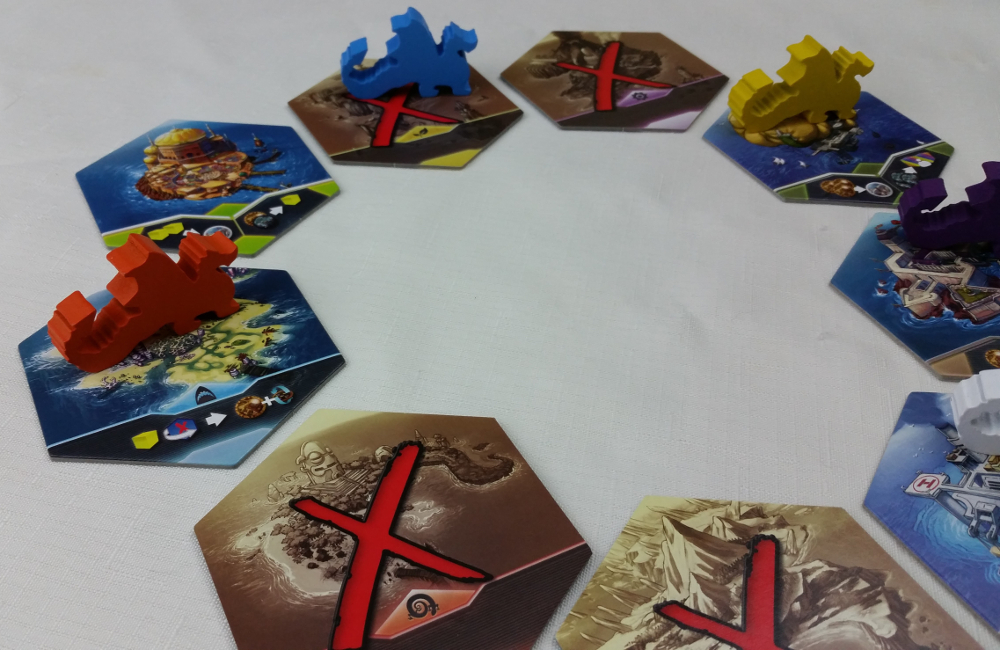
Orange is about to Explore on Blue’s tile. After splitting the cubes, this tile will turn face down while the other four turn back up.
Second, Exploring forces you to engage with your opponents. This fosters player interaction and adds some variety to your turns. Couple this with RYŪ’s highly accessible rules and modest play time, and it makes RYŪ precisely the kind of resource management game Socializers can get behind.
Finally, the impact of Exploring shifts as the game sails along. At the beginning of RYŪ, everyone starts on equal resource footing. Since all five player tiles behave the same way, it’s largely irrelevant whose tile you visit and share resources with. As the game moves along, however, and the guild tiles become more useful, the importance of Exploring shrewdly evolves over time. You may still need resources, for instance, but you may opt to use the tile of a player other than the front-runner instead.
Indeed, while the game is hardly cooperative, RYŪ is much more of a resource race than a post-apocalyptic style conflict. Aside from using the Governor tiles to flush out players who may be stockpiling cubes or to flip a player tile to stymie their ability to get easy resources, there is little you can do to your opponents directly. This makes sense given the game centers around building your own statue more than tearing another’s down, but it also means that Strikers will want to head for different shores.
The Nine Rings of Poseidon
You wouldn’t expect spending 45 minutes on a mere nine tiles would be make for a reasonably dynamic resource game. Yet RYŪ delivers exactly that. This is largely accomplished by doing more with less. Between restrictions on acquiring resources and being limited to the actions of 1/3 of the board each turn – a single action at that – RYŪ instills limitations on how much you can do. The result of this is positive overall, albeit with a couple caveats.
On the plus side, because of random tile placement how you navigate each playthrough of RYŪ will vary, allowing for a modest degree of strategic diversity. Some games may rely on Exploring for drafting lots of cubes. Other layouts may create ideal scenarios where you can bounce back and forth between useful guilds.
On the other hand, RYŪ is more about maximizing resource efficiency than it is about hoarding. Since each dragon piece only requires 3-5 cubes, and you’re capped at five tokens of each kind, it often isn’t necessary to store too many resources. This can happen due to the luck-based nature of drawing cubes, but RYŪ offsets this by offering multiple avenues to use extra or unwanted cubes via the guilds or the auction. Players are rarely stuck for long periods, unable to do anything. Because of this, while RYŪ is on the simpler end of games they enjoy, Architects will have fun with this resource building exercise. They’ll particularly enjoy the palpable sense of progression in using your resources toward assembling the dragon – and that victory comes via that construction.
For a game with such a relatively small footprint, RYŪ packs a healthy amount of variability. In spite of this, however, the game can become repetitive after multiple playthroughs. Daredevils will enjoy the random nature of the cube draws and the unpredictability of RYŪ’s Tear, especially in terms of how they affect players’ plans, but with only a single endgame to focus on, their excitement may wane in time. Likewise, Tacticians will enjoy the different ways to accomplish this goal and the light choices available, but the lack of the ability – or even necessity – to plan more than a turn or two ahead will affect replayability in the long term.
The Takeaway
For a game involving very little landmass, RYŪ stands on solid ground despite its unconventional premise. Even with all the oddities to RYŪ’s flavor, it’s never an actual issue once the game begins. If anything, the game’s artwork of five wildly diverse groups fighting over the honor of a sky-dragon adds a pleasant dose of eccentric charm and reinforces RYŪ’s unique setting.
RYŪ’s gameplay appeal is far more straightforward, being both easy to learn and engaging enough to hold interest over a scant 45 minutes. The game skillfully uses simple mechanics and limited options to provide meaningful decisions but without adding unnecessary complexity or confusion. It also scales particularly well for 3-5 players, proving itself as a concise-yet-lightweight resource management game. However, staying power in RYŪ is a mild concern lest it become all washed up, as the game walks a difficult line between being accessible enough for casual gamers while providing enough variety to maintain long-term replayable interest. Ultimately, though, most should enjoy this dragon-worshiping exercise for a fair amount of island visits.
RYŪ is a product of Asmodee Editions.
Cardboard Republic Snapshot Scoring (Based on scale of 5):
Artwork: 4.5
Rules Clarity: 4.5
Replay Value: 3.5
Physical Quality: 4.5
Overall Score: 4
Photo Credits: Waterworld by Universal Pictures.

